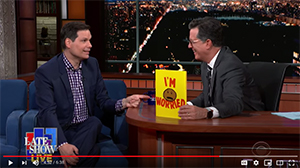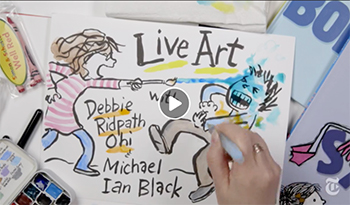Europe trip (Part 12): Rome
 Monday, June 12, 2006 at 11:20AM
Monday, June 12, 2006 at 11:20AM 
Above: This was a frequent sight in Rome...women dressed relatively formally, in a dress and high heels, riding motorbikes.
 |
I've just discovered that I have not been getting some of my e-mail (including LJ comment notifications), still not sure why. :-( If you've recently sent me e-mail and have not yet received a reply, please do re-send just in case, cc:ing to my inkygirl@gmail.com account. Thanks!
Jeff and I enjoyed hanging out with Reid, Luisa, Michael and Ronnie yesterday afternoon. The photo to the right: Luisa made this pot herself, from scratch (!). She claims it's a reject, but I liked it so much she let me keep it. Thanks to Luisa for the fine lunch. Afterward, we browsed an Arts show at a nearby arts community centre where Luisa does her pottery.
I also just found out about a huge used bookstore modeled on New York's The Strand will be opening in Toronto this September. I'm looking forward to checking it out!
But back to my trip report, which is nearly at at end:

Part 1 (Paris) - Part 2 (more Paris) - Part 3 (Fonte de' Medici) - Part 4 (Montalcino and Montefiridolfi) - Part 5 (La Petraia) - Part 6 (Florence) - Part 7 (more Florence) - Part 8 (Cinque Terre) - Part 9 (Pisa, Fiesole and Volpaia) - Part 10 (Lost in Siena) - Part 11 (Siena) - Part 12 (Rome) - Final
Leaving Fonte de' Medici was hard; it had become home to us for a couple of weeks. But we were also excited about seeing Rome! We stayed at the Hotel De Petris (Via Rasella 142 - 00187) in Rome for two nights. Ginny parked her car at the airport and we took a cab into the city because we didn't want to have to drive in Rome. My friend Reid said he enjoyed driving in Rome when he and Luisa visited...he said everyone drove like him. :-)
We only had one full day in Rome, but I think we did fairly well at making the most of the time.
It helped that in Rome, it's nearly impossible to walk somewhere and not see something interesting. We wandered into Piazza di Pietra, for example, and were blown away by the gorgeous flowers (does anyone know what type these are?) exploding across the front of a building:

Then I heard music, turned, and saw this street musician:

...who was performing in front of Hadrian's Temple, which was built in 145 AD.

145 AD.
The immense age of some of the structures around us floored and humbled me. One of the things I loved so much about this trip, especially our visit to Rome, is how much more exciting history became for me; I hated history in school, found most of pretty dull.
In Rome, we were in the middle of it. Just as I had in the Notre Dame in Paris, I'd look down at the stone beneath my feet and wonder at the centuries of souls who had walked on that same spot. In Rome, I realized how many more centuries were represented.
The Pantheon, for example:

According to this Wikipedia entry, the original Pantheon was built in 27 BC-25 BC under the Roman Empire and it remains the best-preserved of all Roman buildings as well as the oldest important building in the world with its original roof intact.
Inside, the oculus is the only opening in the building that lets in light:

Exploring the Roman Forum ruins, we came across the remains of even older buildings like the Temple of Saturn below, which was established between 501 and 498 BC:

As we walked around the area, small dust storms like this one would whirl around every so often as tourists covered their faces. I was still getting Roman dust out of my clothes days after getting back from the trip, but it was worth it. :-)
Of course we had to explore the Coliseum:

Thanks to "Fifona"" on LJ for her Rome recommendations: We did find Tre Scalini but sadly didn't have time to try the chocolate bombe. We had lunch at Ristorante Virgilio Pizzaria Birreria in Camp di Fiori and browsed the wonderful market there. We tried visiting Gelateria San Crispino (Via della Panetteria 42), but it was closed both times...in the evenings, plus all day Tuesdays. We did go to Sant'Eustachio Il Caffe near Trevi fountain, where Jeff and Ginny had some of their fine coffee:

I also visited Giolitti (Via dei Uffici del Vicario 40) because of the intriguing "Sistine Chapel of gelati" description. They did indeed have many flavours, but none were labelled! In English OR Italian. Rather than pick randomly, I opted to sample gelato at other places in my continuing quest for good gelato.
My vote for The Best Gelato In Rome is Gelateria Valentino (Via del Lavatore, 96, 00187 Roma - tel. 06 6783219 near the Trevi fountain). I sampled a LOT of gelato while I was in Italy, and I liked their the gelato and customer service the best. Their pink grapefruit gelato was amazing. Here are just a few of their flavours:

Here's the crowd at the famous Trevi fountain:

The crowd was even more impressive at the Vatican, so we opted to look at St. Peter's Basilica from the outside rather than go in. Later on we chatted with a couple at the airport who said they were there when we were, and waited about 2 1/2 hours in line to get inside.

One of the window displays in the (very) upscale shopping district Via dei Condotti. Items in this display:
Dress: 1625 euros (CA$2311.11)
Bag: 2700 euros (CA$3840)
Sandals: 780 euros (CA$1109.33)
Watch: 2350 euros (CA$3342.22)
Belt: 480 euros (CA$582.67)
TOTAL = 7935 euros (CA$11,185.33)

During our wanderings, we came across I Colori Di Dentro ("The Inside Colors") at Via dei Banchi Vecchi 29, 00186 Roma), a wonderful little shop and art studio. The artist is Maria Grazia Luffarelli, who specializes in original and print watercolors. We loved her work because it was bright and cheerful, very much like Maria's personality. We ended up buying a number of prints as well as the three mounted prints she's holding in the photo above. Maria is also a children's book illustrator. More info about Maria at her Web site.
On our last evening in Italy, Jeff and I took Ginny out for dinner at a restaurant of her choice. She chose L'eau Vive di Roma (Via Monterone 00186 Roma, ph: 06-68801095, near Piazza Navona & the Pantheon), a place she had heard about from a friend. Run by a society of French missionary nuns, the restaurant is known for serving good classic French cuisine. Apparently Pope John Paul II dined here when he was archbishop of Krakow.
I ordered lettuce soup with toasted nuts, leg of lamb, and chocolate mousse for dessert. Like the food we'd had on the rest of the trip, it was excellent. I was especially surprised that the lettuce soup was so delicious; I had ordered it out of curiosity.
Partway through the meal, everyone stopped to sing Ave Maria. The nuns dressed in traditional costumes had handed out flyers with English, Italian and French versions of the song and there we all were, tourists and locals alike, singing along in a moment I found surprisingly touching. All proceeds from the restaurant go to charity.

Rome was a place that deserved to be explored in more than one day. So many things to see and so little time! I'd like to come back when we can visit at a more leisurely pace.
Hm. I've been saying this a lot during my trip reports, haven't I? At this rate, Jeff and I would have to LIVE in Europe for several months to properly appreciate all these places but even then I suspect we'd only find more we'd want to come back for. It's part of why I love traveling.
But more on this in my next Blathering, which will conclude this trip report.
| June/2006 comments: Read Blatherchat | Post in Blatherchat | Livejournal comments |










































